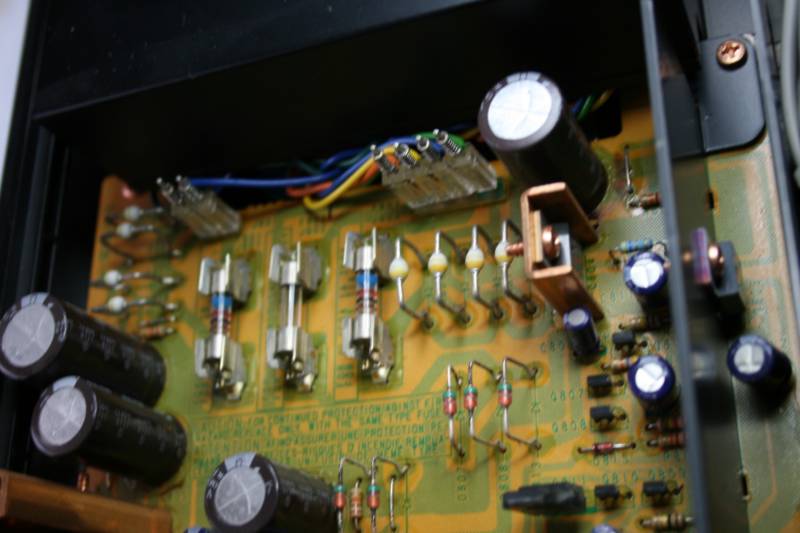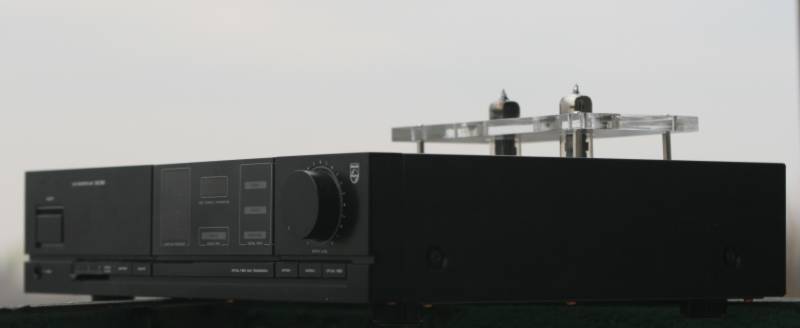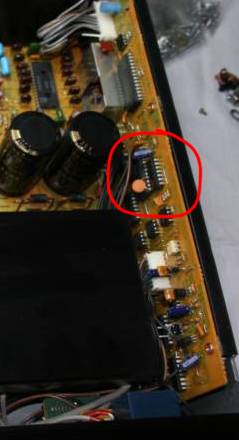Philips
DAC-960
Finalized in june 2008. by
Lampizator
What a machine this is!
The only separateDAC made by Philips that I know of.
High-end? You bet. With cast chassis, cast floor, copper shielding,
steel partitioning of all sections (4 partitions) and 3 transformers.
Balanced output (not real, fake one with analog stage balancing
transformers, no double DACs, sorry.)
Super DAC chip TDA1541A (No S1 -WHY NOT??!!?? In the flagship? Shame).
Unfortunately or perhaps fortunately - only one chip. Single op-amp per
unit,
output leg 6. We get rid of it right away.
Made in Japan, by Marantz, it is almost identical PCB to the
Marantz CD 94
MK1, a legendary player.
After lampization (I go for exposed internal with plexiglass) this DAC
will have in total 4 power transformers. !!!
Out of the box the unit sounds quite good, of course not as good as
lampized Grundig CD 9009 fine arts but still decent. Considering
that the schematics
reveal tons of unnecessary garbage in output stage, it is a MIRACLE
that this player plays at all any music. I cant wait to bypass al that
crap. Switches, relays, transformers, opamps, wires, pots, - kilograms
of circuitry after the dac. And at the output sockets - HORROR - they
soldered ceramic capacitors to ground to kill the high frequencies and
to improve the S/N
on paper.
Buuuuuuuuuuu.....

The big dial is the headphones volume knob.

The display indicates that the DAC has locked itself to the input
signal.

Deceiving XLR outpurs with bad signal due to poor transformer quality.
But at least this used to allow for 100 m of interconnect to run well
without humming.

Some "critical" boards are covered by the metal shields. IMHO this is
bulshit.

Look at these babes - like twin towers. All Gucci and Prada. They are
actually bigger than
my amplifier's monoblock caps in power supply

Typical Marantz of Japan power PCB. Diodes standing, traces painted on
the
top side (nice for tweakers and servicemen !!!) and many fuses.
Generally - SUPERB engineering culture not to be found elsewhere today.

This TDA 1541A has proper caps for decoupling (the purple thingies
around the
chip) - unlike most Philips based machines, which have the ugly awful
SMD caps underneath the PCB. This dac, however, was made in Japan.

Look at these - two EI transformers and one toroid.

Cast body = VERY heavy.

Transformer and power supply blocks suspended under the hood. There was
no other place.

Test drive with messy wiring.
At first I used OP-AMP for I/U conversion, but later changed to
resistor 68 Ohms. And later to 82.
The tube was first the 6H1P and later upgraded to E88CC Tesla Gold Pin.
this tube is a match made in heaven for the R82 and TDA. Later I
discovered the even better match - the 6N2P
which I absolutely love.




the schematics is here
This player is a very good one, it sounds absolutely first class, in
top top league. Although - all things being equal - to my ears it is
NOT that much better than other Philips machines - integrated players
with
TDA1541A and after capacitors tweaking. All the big money in this
unit went where it does not count for us audiophiles.
Having said all that - heavy and well built product is always nice to
have.
And whatever you decide - remember to do:
the NOS modification. It
is
really very easy.
 In
the red circle is the SAA7220p/B chip and a little above it - the 4
channel optoisolator.
In
the red circle is the SAA7220p/B chip and a little above it - the 4
channel optoisolator.
The circuitry which we must
modify is on the vertical PCB on the
right hand side of the box. When you see the underside of this board,
you will notice that the SAA 7220 is coupled to the TDA not directly
but via optoisolators. For whatever reason - a nice touch. Maybe there
is less noise and less ground problems.
so the cut of trace is done between the SAA7220 and optoisolator chip,
and the bridge wires go from SAA 7220 legs 1, 2 and 3 to the input of
optoisolators (after the cut.)
Sound is breathtaking ! Very highly recommended.
BACK









 In
the red circle is the SAA7220p/B chip and a little above it - the 4
channel optoisolator.
In
the red circle is the SAA7220p/B chip and a little above it - the 4
channel optoisolator.